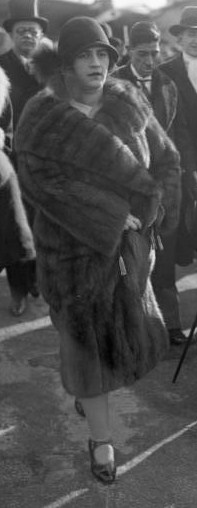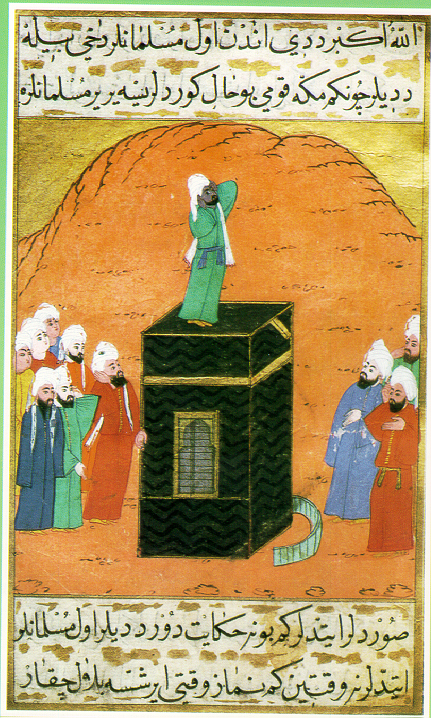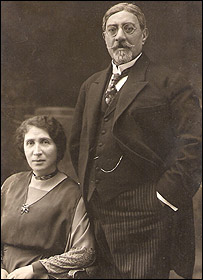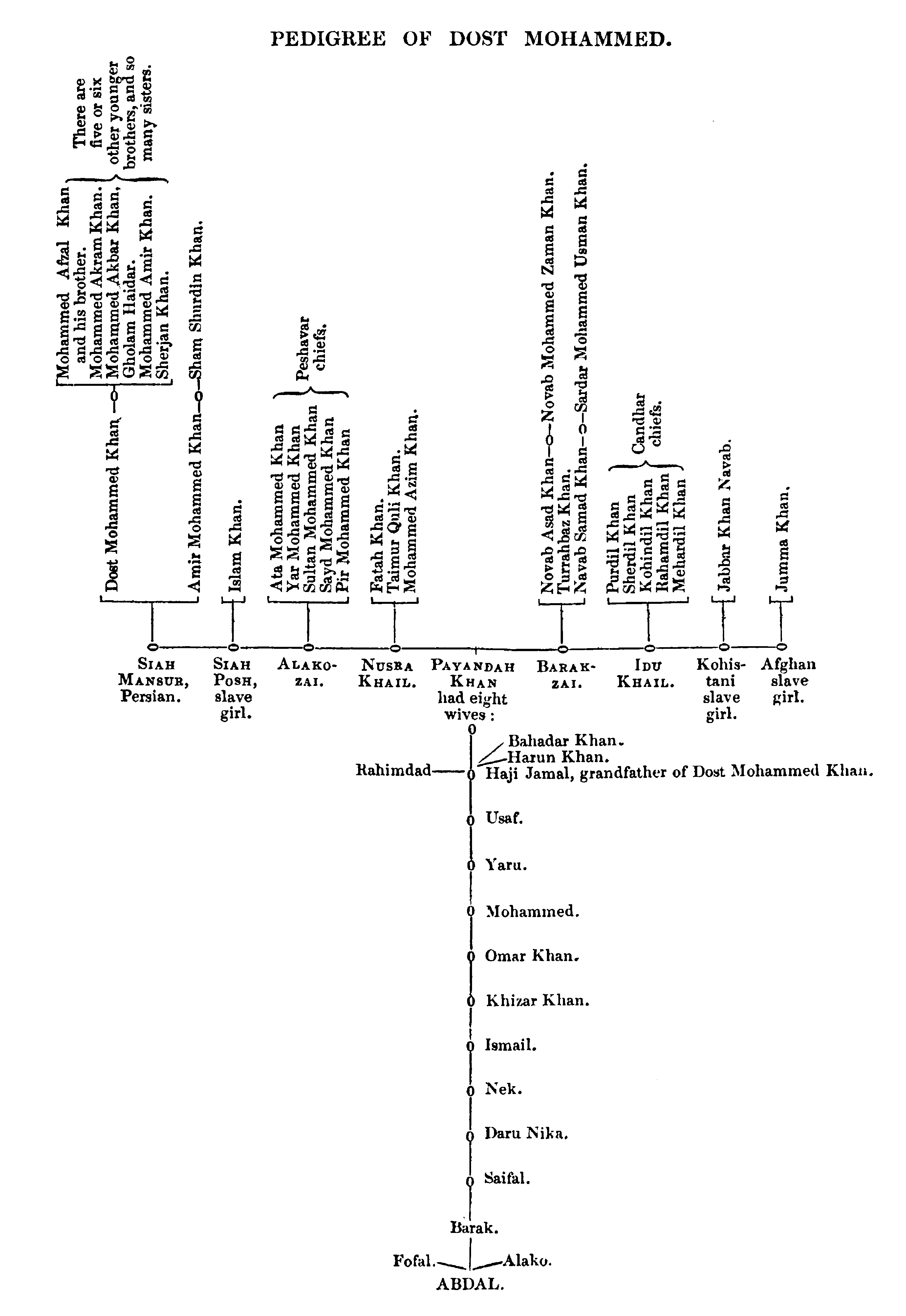|
Soraya Tarzi
Soraya Tarzi (Pashto/Dari: ملکه ثريا; November 24, 1899 – April 20, 1968) was the first queen consort of Afghanistan as the wife of King Amanullah Khan. She played a major part in the modernization reforms of Amanullah Khan, particularly in regard to the emancipation of women. Born in Syria, she was educated by her father, who was the Afghan leader and intellectual ''Sardar'' Mahmud ''Beg'' Tarzi. She belonged to the Mohammadzai Pashtun tribe, a sub-tribe of the Barakzai dynasty. As Queen of Afghanistan, she was not only filling a position – but became one of the most influential women in the world at the time. Owing to the reforms King Amanullah Khan instituted, the country's religious sects grew violent. In 1929, the King abdicated in order to prevent a civil war and went into exile. Their first stop was India, then part of the British Empire. Early life and family background Suraiya Shahzada Tarzi was born on 24 November 1899, in Damascus, Syria, then part o ... [...More Info...] [...Related Items...] OR: [Wikipedia] [Google] [Baidu] |
Queens Of Afghanistan
This is a list of the consorts of Afghan rulers. Historically, Afghan rulers, being Muslim, may have several wives, and not always a queen consort. Afghanistan has only intermittently been a republic – between 1973–1992 and from 2001 onwards – at other times being governed by a variety of List of monarchs of Afghanistan, kings. Consorts of the Hotaki Empire (1709–1738) Hotaki Empire Consorts of Durrani Empire (1747–1823) Durrani Empire Consorts of Emirate of Afghanistan (1823–1926) Emirate of Afghanistan Consorts of Kingdom of Afghanistan (1926–1973) Kingdom of Afghanistan See also * First Lady of Afghanistan * List of presidents of Afghanistan * President of Afghanistan References {{Reflist External linksAfghanwiki.com Afghan royal consorts, Afghanistan-related lists, Queens Lists of royal consorts, Afghanistan, List of royal consorts of ... [...More Info...] [...Related Items...] OR: [Wikipedia] [Google] [Baidu] |
List Of Monarchs Of Afghanistan
This article lists the heads of state of Afghanistan since the foundation of the first modern Afghan state, the Hotak Empire, in 1709. History The Hotak Empire was formed after a successful uprising led by Mirwais Hotak and other Afghan tribal chiefs from the Kandahar region against Mughal and Safavid Persian rule. After a long series of wars, the Hotak Empire was eventually replaced by the Durrani Afghan Empire, founded by Ahmad Shah Durrani in 1747. After the collapse of the Durrani Empire in 1823, the Barakzai dynasty founded the Emirate of Kabul, later known as the Emirate of Afghanistan. The Durrani dynasty regained power in 1839, during the First Anglo-Afghan War, when former ruler Shah Shujah Durrani seized the throne under the British auspices. Shah Shujah was assassinated in 1842, following the British retreat. Afterwards the Barakzai dynasty regained power, eventually transformed the Emirate into the Kingdom of Afghanistan in 1926, and ruled the country (with ... [...More Info...] [...Related Items...] OR: [Wikipedia] [Google] [Baidu] |
Great Mosque Of Aleppo
The Great Mosque of Aleppo ( ar, جَـامِـع حَـلَـب الْـكَـبِـيْـر, ''Jāmi‘ Ḥalab al-Kabīr'') is the largest and one of the oldest mosques in the city of Aleppo, Syria. It is located in al-Jalloum district of the Ancient City of Aleppo, a World Heritage Site, near the entrance to Al-Madina Souq. The mosque is purportedly home to the remains of Zechariah, the father of John the Baptist, both of whom are revered in IslamThe Great Mosque (The Umayyad Mosque) Syria Gate. and . |
Muezzin
The muezzin ( ar, مُؤَذِّن) is the person who proclaims the call to the daily prayer ( ṣalāt) five times a day (Fajr prayer, Zuhr prayer, Asr prayer, Maghrib prayer and Isha prayer) at a mosque. The muezzin plays an important role in ensuring an accurate prayer schedule for the Muslim community. Etymology The English word ''muezzin'' is derived from the ar, مُؤَذِّن, , simplified ''mu'azzin''. The word means "one by the ear", since the word stems from the word for "ear" in Arabic is ''ʾudhun'' (أُذُن). As the ''muʾadh·dhin'' will place both hands on his ears to recite the call to prayer. Roles and responsibilities The professional muezzin is chosen for his good character, voice and skills to serve at the mosque. However, the muezzin is not considered a cleric, but in a position comparable to a Christian verger. He is responsible for keeping the mosque clean, for rolling the carpets, for cleaning the toilets and the place where people wash the ... [...More Info...] [...Related Items...] OR: [Wikipedia] [Google] [Baidu] |
Aleppo
)), is an adjective which means "white-colored mixed with black". , motto = , image_map = , mapsize = , map_caption = , image_map1 = , mapsize1 = , map_caption1 = , pushpin_map = Syria#Mediterranean east#Asia#Syria Aleppo , pushpin_label_position = left , pushpin_relief = yes , pushpin_mapsize = , pushpin_map_caption = Location of Aleppo in Syria , coordinates = , subdivision_type = Country , subdivision_name = , subdivision_type1 = Governorate , subdivision_type2 = District , subdivision_type3 = Subdistrict , subdivision_name1 = Aleppo Governorate , subdivision_name2 = Mount Simeon (Jabal Semaan) , subdivision_name3 = Mount Simeon ( ... [...More Info...] [...Related Items...] OR: [Wikipedia] [Google] [Baidu] |
Effendi
Effendi or effendy ( tr, efendi ; ota, افندی, efendi; originally from grc-x-medieval, αφέντης ) is a title of nobility meaning ''sir'', ''lord'' or ''master'', especially in the Ottoman Empire and the Caucasus''.'' The title itself and its other forms are originally derived from Medieval Greek ''aphentēs'' which is derived from Ancient Greek ''authentēs'' meaning lord. It is a title of respect or courtesy, equivalent to the English Sir. It was used in the Ottoman Empire and Byzantine Empire. It follows the personal name, when it is used, and is generally given to members of the learned professions and to government officials who have high ranks, such as ''bey'' or ''pasha''. It may also indicate a definite office, as , chief physician to the sultan. The possessive form ''efendim'' (my master) is used by servants, in formal discourse, when answering the telephone, and can substitute for "excuse me" in some situations (e.g. asking someone to repeat something). ... [...More Info...] [...Related Items...] OR: [Wikipedia] [Google] [Baidu] |
Sheikh
Sheikh (pronounced or ; ar, شيخ ' , mostly pronounced , plural ' )—also transliterated sheekh, sheyikh, shaykh, shayk, shekh, shaik and Shaikh, shak—is an honorific title in the Arabic language. It commonly designates a chief of a tribe or a royal family member in Arabian countries, in some countries it is also given to those of great knowledge in religious affairs as a surname by a prestige religious leader from a chain of Sufi scholars. It is also commonly used to refer to a Muslim religious scholar. It is also used as an honorary title by people claiming to be descended from Hasan ibn Ali and Husayn ibn Ali both patrilineal and matrilineal who are grandsons of the Islamic prophet Muhammad. The term is literally translated to " Elder" (is also translated to "Lord/Master" in a monarchical context). The word 'sheikh' is mentioned in the 23rd verse of Surah Al-Qasas in the Quran. Etymology and meaning The word in Arabic stems from a triliteral root connected with a ... [...More Info...] [...Related Items...] OR: [Wikipedia] [Google] [Baidu] |
Khan (title)
Khan ''khan/qan''; tr, han; Azerbaijani: ''xan''; Ottoman: ''han''; Old Turkic: ''kan''; Chinese: 汗 ''hán''; Goguryeo: 皆 ''key''; Buyeo: 加 ''ka''; Silla: 干 ''kan''; Gaya: 旱 ''kan''; Baekje: 瑕 ''ke''; Manchu: ; Persian: خان; Punjabi: ਖ਼ਾਨ; Hindustani: ख़ान or ख़ां (Devanagari), or (Nastaleeq); Balochi: خان; Bulgarian: хан, ''khan''; Chuvash: хун, ''hun''; Arabic: خان; bn, খান or ) () is a historic Turko-Mongol title originating among nomadic tribes in the Central and Eastern Eurasian Steppe to refer to a chief or ruler. It first appears among the Rouran and then the Göktürks as a variant of khagan (sovereign, emperor) and implied a subordinate ruler. In the Seljuk Empire, it was the highest noble title, ranking above malik (king) and emir (prince). In the Mongol Empire it signified the ruler of a horde (''ulus''), while the ruler of all the Mongols was the khagan or great khan. The title subsequently de ... [...More Info...] [...Related Items...] OR: [Wikipedia] [Google] [Baidu] |
Asma Rasmya
Asma Rasmya or Asma Rasmiya Khanum (1877 – ?), was an Afghan editor, school principal and feminist. She has been referred to as the first female managing editor as well as the first female principal in Afghanistan. She was the mother of queen Soraya Tarzi and the mother-in-law of king Amanullah Khan (r. 1919–1929). Life She was born in Damascus in Ottoman Syria. She was the daughter of Saleh Al-Mossadiah, a muezzin of the Umayyad mosque. In 1891, she married the Afghan politician and editor Mahmud Tarzi Mahmud Tarzi ( ps, محمود طرزۍ, Dari: محمود بیگ طرزی; August 23, 1865 – November 22, 1933) was an Afghan politician and intellectual. He is known as the father of Afghan journalism. He became a key figure in the history of .... She moved to Afghanistan in 1901. Afghanistan was at this point very conservative, while she was more Western in her outlook, having been raised in the Ottoman Empire after the Tanzimat reforms. In 1913, her daughter Soraya ma ... [...More Info...] [...Related Items...] OR: [Wikipedia] [Google] [Baidu] |
Ghulam Muhammad Tarzi
''Sardar'' Ghulam Muhammad Khan Tarzi (born Kandahar, April 30, 1830 – 1900/1901) son of ''Sardar'' Rahim Dil Khan (and grandson of ''Sardar'' Payinda Khan Mohammadizi or ''Sardar'' Payinda Muhammad Khan) was a ruler of Kandahar. He was a Pashtun people, Pashtun soldier, poet, and military leader in Afghanistan. He is often credited with developing the traditional family name 'Tarzi,' which played a critical role in the history of Afghanistan. Early life Tarzi's family belonged to the royal sub-tribe known as the Mohammadzai, the most powerful and prominent of the Barakzai Dynasty. A soldier in his youth, he later took up poetry. Soon after, Amir Dost Mohammad Barakzai, Dost Muhammad integrated him into the community of state princes and learned scholars. Tarzi was related to both Amir Dost Muhammad and his successor, Amir Sher Ali Khan.Official Web-site of Mahmud Tarzi: Ghulam Muhammad Tarzi Biog.Link Chief Evidence shows Tarzi as a Chief in southern Afghanistan, most l ... [...More Info...] [...Related Items...] OR: [Wikipedia] [Google] [Baidu] |
Barakzai Dynasty
The two branches of the Barakzai dynasty (, "sons of Barak") ruled modern day Afghanistan from 1823 to 1973 when the monarchy ended under Musahiban Mohammed Zahir Shah. The Barakzai dynasty was established by Dost Mohammad Khan after the Durrani dynasty of Ahmad Shah Durrani was removed from power. At the start of Barakzai rule in March 1823, the Afghans lost their former stronghold of Peshawar Valley to the Sikh Khalsa Army of Ranjit Singh at the Battle of Nowshera. The Afghan forces in the battle were supported by Azim Khan, half-brother of Dost Mohammad Khan. During the Barakzai era, Afghanistan saw much of its territory lost to the British in the south and east, Persia in the west, and Russia in the north. There were also many conflicts within Afghanistan, including the three major Anglo-Afghan wars and the 1928–29 civil war. History and background The Barakzai dynasty was the line of rulers in Afghanistan in the 19th and 20th centuries. Following the fall of the Dur ... [...More Info...] [...Related Items...] OR: [Wikipedia] [Google] [Baidu] |






.jpg)




